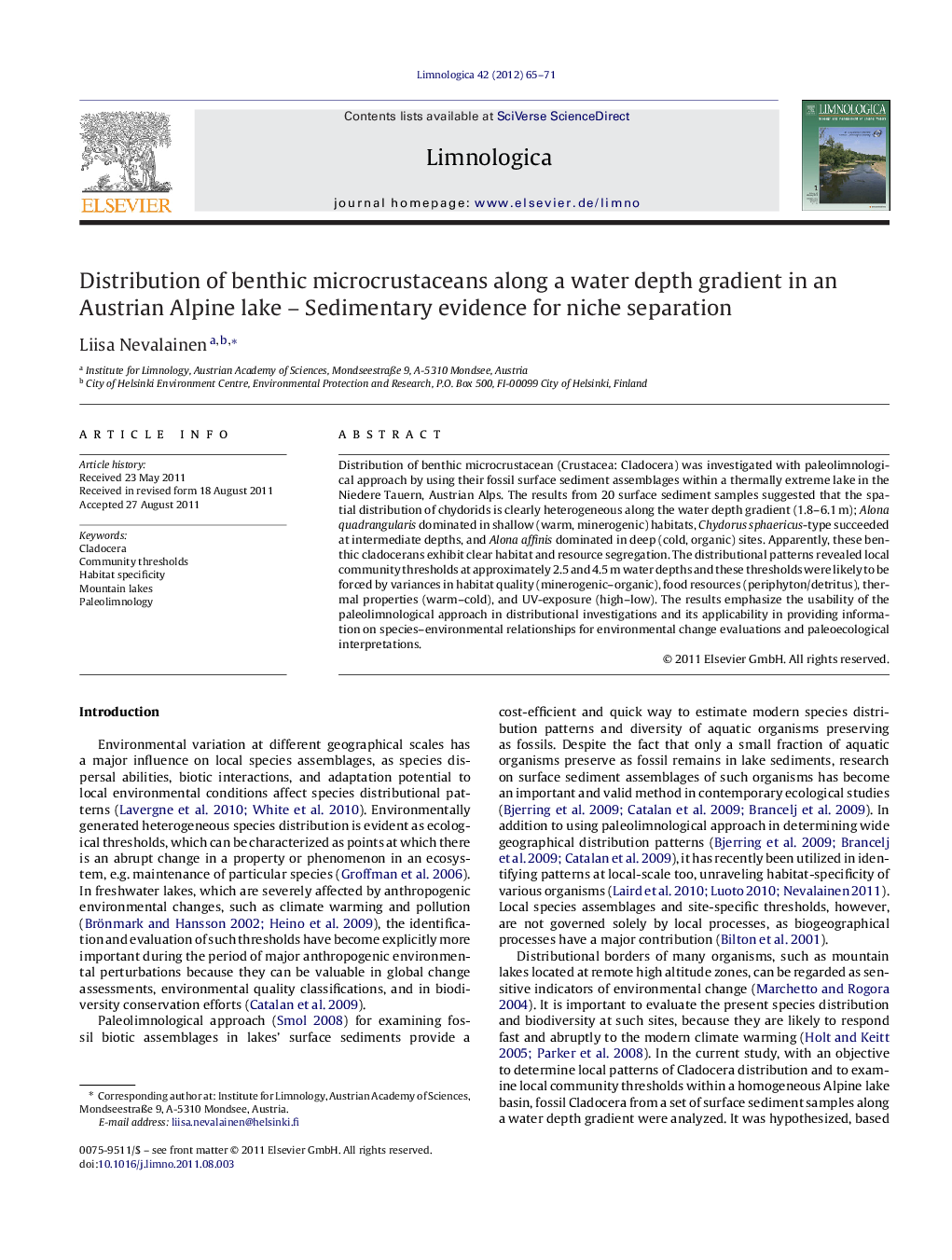| Article ID | Journal | Published Year | Pages | File Type |
|---|---|---|---|---|
| 4400519 | Limnologica - Ecology and Management of Inland Waters | 2012 | 7 Pages |
Distribution of benthic microcrustacean (Crustacea: Cladocera) was investigated with paleolimnological approach by using their fossil surface sediment assemblages within a thermally extreme lake in the Niedere Tauern, Austrian Alps. The results from 20 surface sediment samples suggested that the spatial distribution of chydorids is clearly heterogeneous along the water depth gradient (1.8–6.1 m); Alona quadrangularis dominated in shallow (warm, minerogenic) habitats, Chydorus sphaericus-type succeeded at intermediate depths, and Alona affinis dominated in deep (cold, organic) sites. Apparently, these benthic cladocerans exhibit clear habitat and resource segregation. The distributional patterns revealed local community thresholds at approximately 2.5 and 4.5 m water depths and these thresholds were likely to be forced by variances in habitat quality (minerogenic–organic), food resources (periphyton/detritus), thermal properties (warm–cold), and UV-exposure (high–low). The results emphasize the usability of the paleolimnological approach in distributional investigations and its applicability in providing information on species–environmental relationships for environmental change evaluations and paleoecological interpretations.
